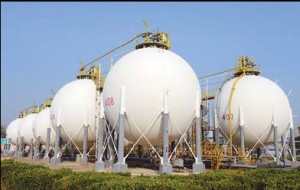 Natural gas was little changed on Friday and headed for a weekly drop following a slightly bearish inventory report by the EIA and forecasts for widespread comfortable temperatures that would keep demand limited.
Natural gas was little changed on Friday and headed for a weekly drop following a slightly bearish inventory report by the EIA and forecasts for widespread comfortable temperatures that would keep demand limited.
Natural gas for delivery in June traded 0.15% higher at $2.738 per million British thermal units at 8:25 GMT, having shifted in a daily range of $2.740-$2.725. The contract tumbled 1.5% on Thursday to $2.734 and is down 1.4% for the week so far.
The Energy Information Administration reported yesterday that US natural gas stockpiles rose by 76 billion cubic feet in the week ended May 1st, an inch above analysts median projections for a 75-bcf increase. This compared to the five-year average of +68 billion cubic, while stockpiles gained 75 bcf during the comparable period a year earlier.
Total gas held in US storage hubs amounted to 1.786 trillion cubic feet, narrowing a deficit to the five-year average of 1.853 trillion to 3.6%, or 67 bcf, from 4.2% last week. Inventories were at a surplus of 71.1% compared to year-ago stockpiles of 1.044 trillion cubic feet.
Additional pressure was exerted on the market by persisting forecasts for widespread mild temperatures across the US. According to NatGasWeather.com, natural gas demand in the US will be very low compared to normal through May 14th, with a warm trend for the North over the following seven days, while the South turns much warmer.
Pleasant temperatures have engulfed most of the country, with highs in the uppers 60s through lower 80s over the northern US and 70s and 80s down south. Many regions continue to experience typical Spring weather with showers and thunderstorms, including Texas, the Rockies and the Plains. A Pacific weather system will push inland into the Plains and Midwest, sending temperatures several degrees below normal for a few days.
The country’s eastern regions will continue to experience warmer-than-usual conditions during the weekend before a cooler Canadian system arrives early next week, pushing readings lower across the North and East. The cooler air will also reach Texas, which however will be beneficial for inventory builds as cooling demand remains limited.
As next week progresses, active weather in a typical spring pattern will continue over much of the US, with the majority of the country expected to enjoy near-normal conditions, keeping both heating and cooling demand curbed. The North may be warmer than normal, while Texas and the Southwest are a few degrees cooler as weather systems with showers and thunderstorms pass through. However, higher-than-average readings are expected to return around May 20th.
Next week’s inventory report, due out on May 14th, will reflect a much larger gap to the average, likely over 120 bcf, as temperatures even across the North warmed up this week. Moreover, with mild readings expected to continue, keeping both heating and cooling demand in check, triple-digit builds are likely to extend into June before summer cooling demand kicks in. The five-year average inventory gain for the seven days ended May 8th is +82 bcf, while stockpiles rose by 101 bcf a year earlier.
Readings
According to AccuWeather.com, temperatures in New York will max out at 84-86 degrees on May 11-13th, before dropping to the low-mid 70s for the rest of the month. Chicago will peak at 78 degrees today, 10 above the average, followed by a cooling to the upper 60s and lower 70s through the end of May.
Down South, Houston will reach 86-87 degrees through May 12th, compared to the average 84, before easing to the upper 70s and lower 80s over the next ten days. On the West Coast, highs in Los Angeles will be at 66-67 degrees today and tomorrow, compared to the average of 74, and will rise into the low 70s during the following week.
Pivot points
According to Binary Tribune’s daily analysis, June natural gas futures’ central pivot point stands at $2.755. In case the contract penetrates the first resistance level at $2.800 per million British thermal units, it will encounter next resistance at $2.865. If breached, upside movement may attempt to advance to $2.910 per mBtu.
If the energy source drops below its S1 level at $2.690 per mBtu, it will next see support at $2.645. In case the second key support zone is breached, the power-station fuel’s downward movement may extend to $2.580 per mBtu.
In weekly terms, the central pivot point is at $2.686. The three key resistance levels are as follows: R1 – $2.890, R2 – $3.005, R3 – $3.209. The three key support levels are: S1 – $2.571, S2 – $2.367, S3 – $2.252.





